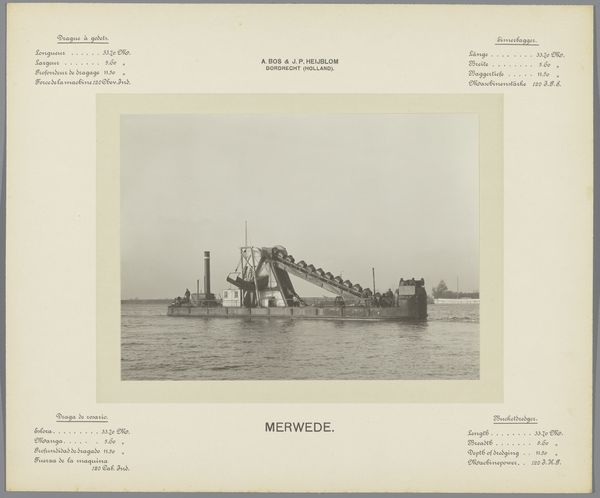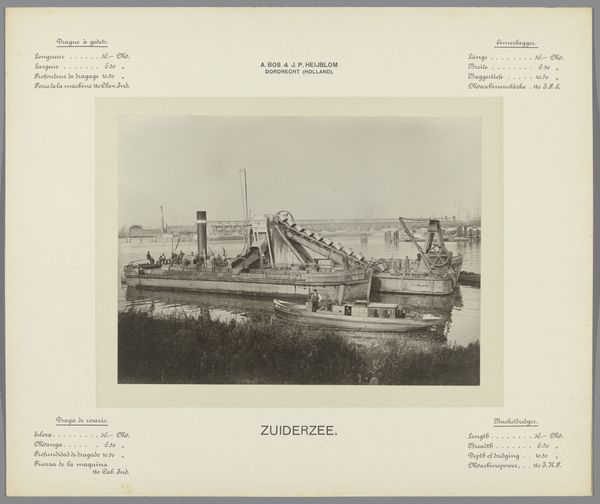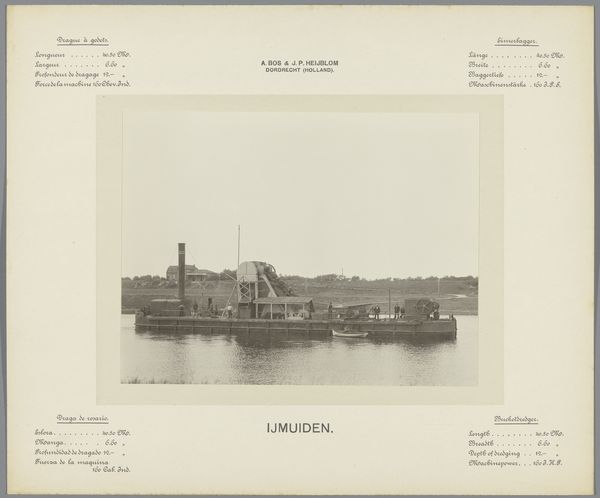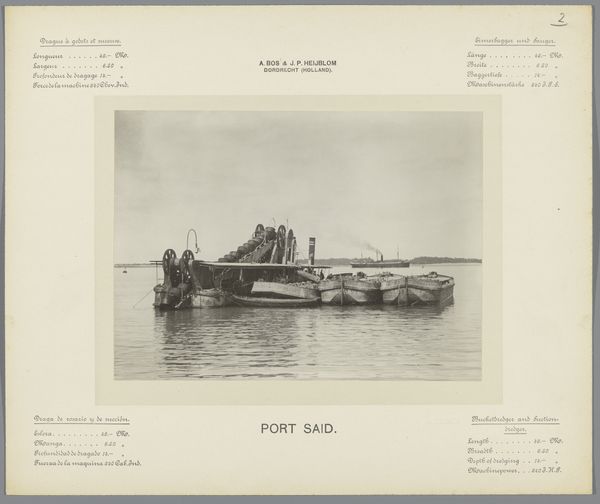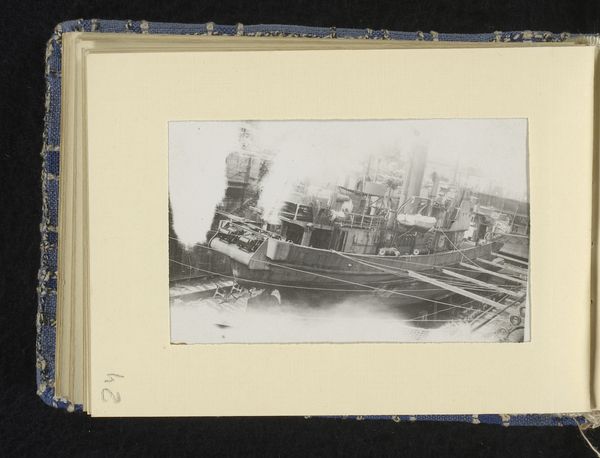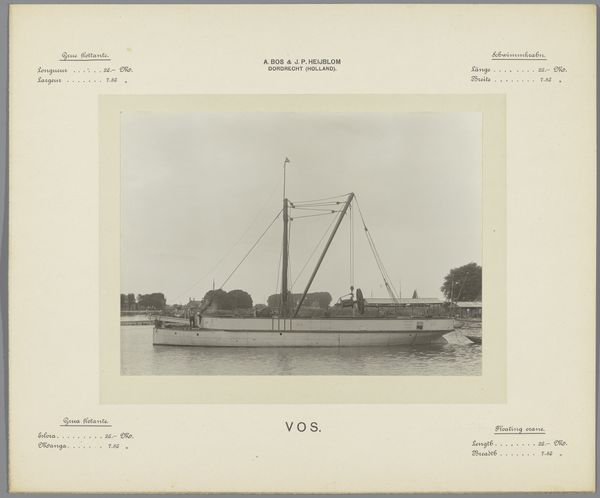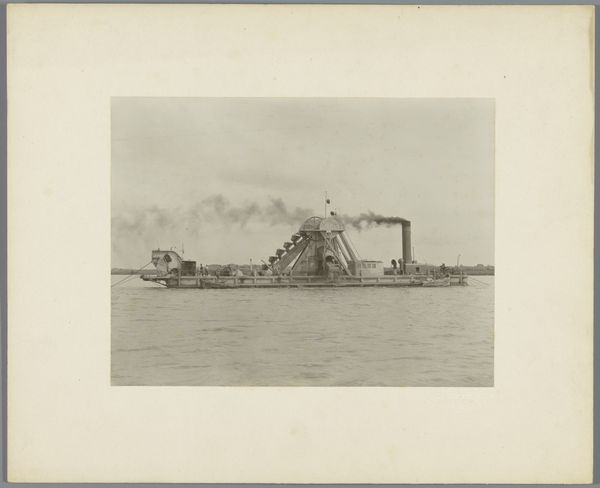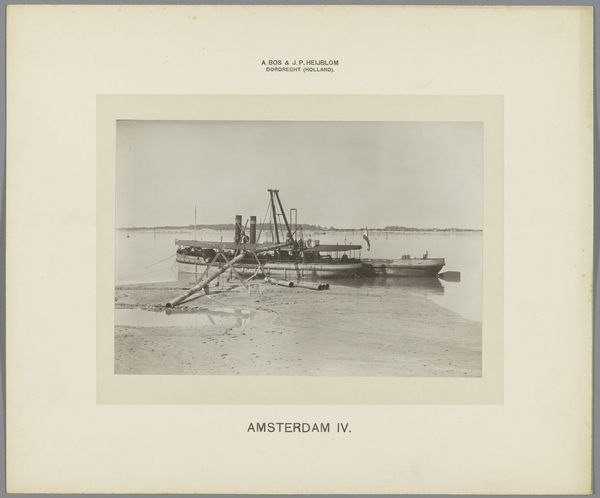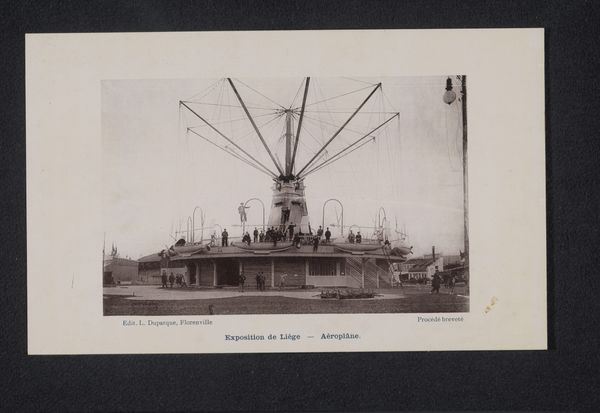
print, photography, gelatin-silver-print
#
ship
# print
#
landscape
#
photography
#
gelatin-silver-print
#
cityscape
Dimensions: height 165 mm, width 225 mm, height 300 mm, width 360 mm
Copyright: Rijks Museum: Open Domain
Editor: This gelatin-silver print, titled "Biesbosch," was created around 1900-1910 by Henricus Jacobus Tollens. It shows a dredging vessel. The tones are beautiful. I’m intrigued by its stark, industrial quality. What statements can we draw about labour through this? Curator: That’s an astute observation. Considering the era, it reflects a critical point where industrial progress intersected with nature. The Biesbosch was then, as it is now, a unique river delta in the Netherlands. Can you consider what the manipulation of nature represents in that particular historical, social and geographical context? Editor: I see what you mean. It’s a fascinating document. The text surrounding the image looks like information about Elevators-transporters, with measurements and details, almost like technical specifications. I also notice how close this image date aligns with growing concerns for the state of our planet, while movements fought for environmental and workers' rights. It feels paradoxical! Curator: Exactly! This photograph captures a moment where technology and the natural landscape were being aggressively reshaped, and ideas of industrial advancement clashed with labour movements advocating for safer working conditions. Doesn't it raise questions about the cost of progress? Think of the Dutch landscape - its nature is already altered dramatically. Editor: It absolutely does. It shows how we’re still grappling with those tensions today, with growing awareness of environmental impact and social justice. It really does invite dialogue between past and present. Curator: I'm so glad you noticed this, understanding it, enriches our experience of art and culture. The “Biesbosch” becomes a potent reminder of those ongoing dialogues.
Comments
No comments
Be the first to comment and join the conversation on the ultimate creative platform.
